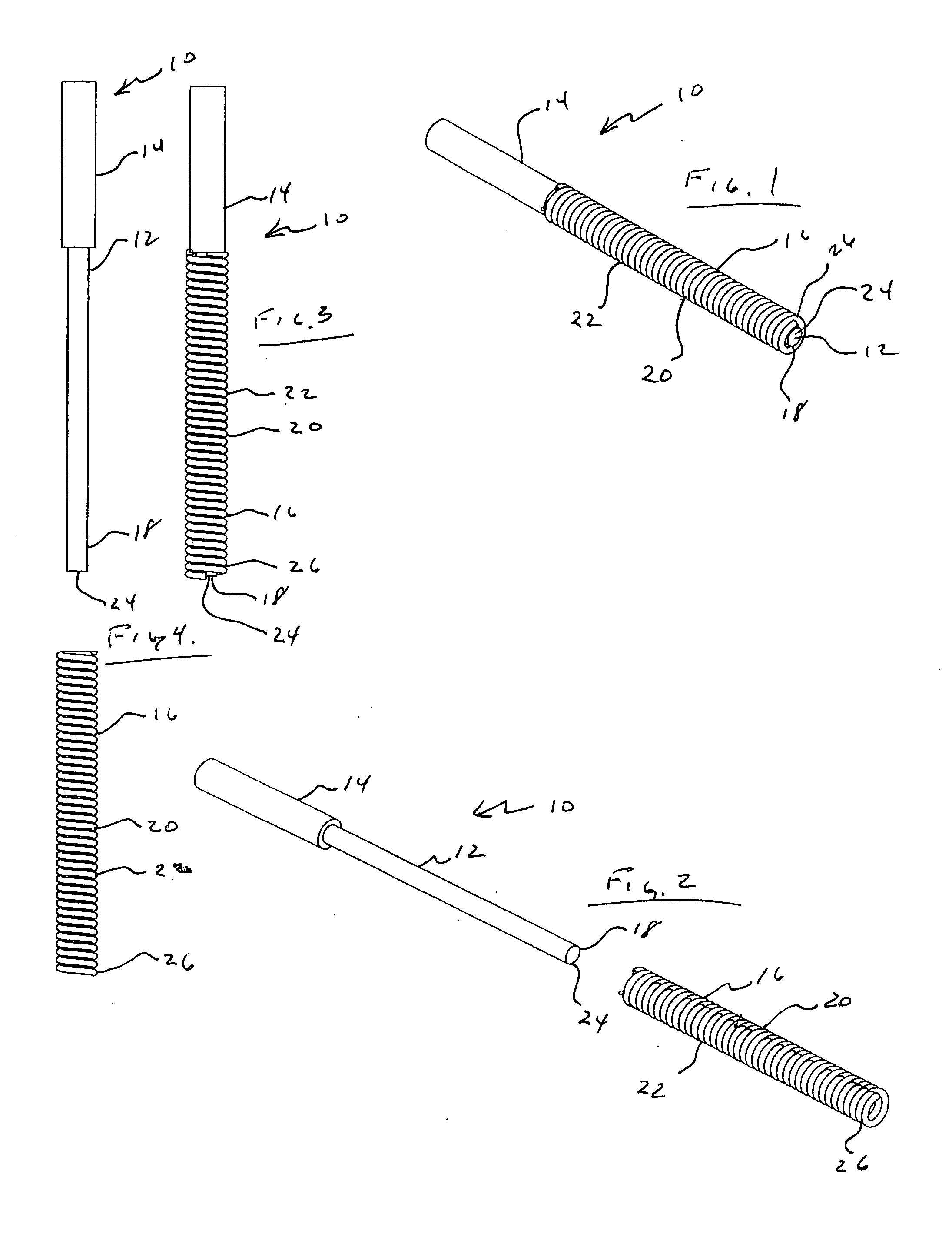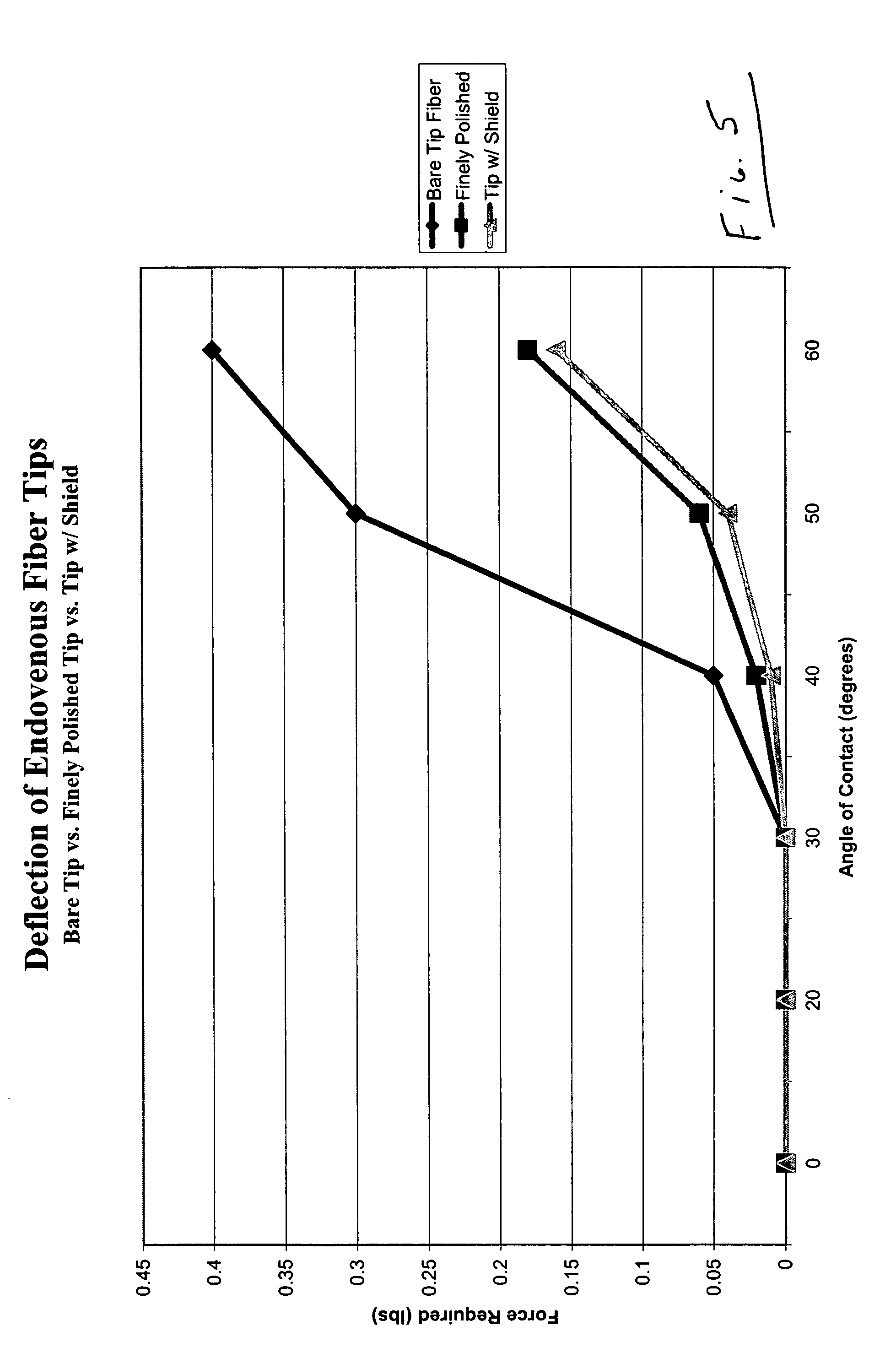Laser fiber for endovenous therapy having a shielded distal tip
a technology of endovenous laser and laser fiber, which is applied in the field of surgical instruments, can solve the problems of symptomatic venous insufficiency, blood flowing down the leg in the wrong direction, and leaking through the valve in a direction away from the heart, and achieves the effect of reducing the risk of inadvertent application of laser energy directly into the venous wall, increasing ultrasound reflectivity, and increasing the visibility of the laser fiber tip to ultrasound
- Summary
- Abstract
- Description
- Claims
- Application Information
AI Technical Summary
Benefits of technology
Problems solved by technology
Method used
Image
Examples
Embodiment Construction
[0022] Referring to FIGS. 1-7, the endovenous laser fiber 10 of the present invention generally includes an optic fiber 12 coaxially surrounded by a protective jacket 14 and having at a distal portion 18 a flexible heat resistant tip shield 16 that has an irregular surface.
[0023] Optic fiber 12 is desirably a 400 to 600 micron glass optical fiber with a finely polished distal tip end, although a polymer fiber could be used. Those skilled in the art will understand that the designated dimension of the glass optical fiber refers to the diameter D of the fiber including the core and cladding but exclusive of the protective jacket 14. The exterior dimensions of the protective jacket are larger. While a single optical fiber is described, it will be recognized that optic fiber 12 could also comprise a stranded arrangement of multiple optical fibers. Desirably the endovenous laser fiber 10 is about three and one half meters long. The optic fiber 12 is preferably provided with a standardiz...
PUM
 Login to View More
Login to View More Abstract
Description
Claims
Application Information
 Login to View More
Login to View More - R&D
- Intellectual Property
- Life Sciences
- Materials
- Tech Scout
- Unparalleled Data Quality
- Higher Quality Content
- 60% Fewer Hallucinations
Browse by: Latest US Patents, China's latest patents, Technical Efficacy Thesaurus, Application Domain, Technology Topic, Popular Technical Reports.
© 2025 PatSnap. All rights reserved.Legal|Privacy policy|Modern Slavery Act Transparency Statement|Sitemap|About US| Contact US: help@patsnap.com



